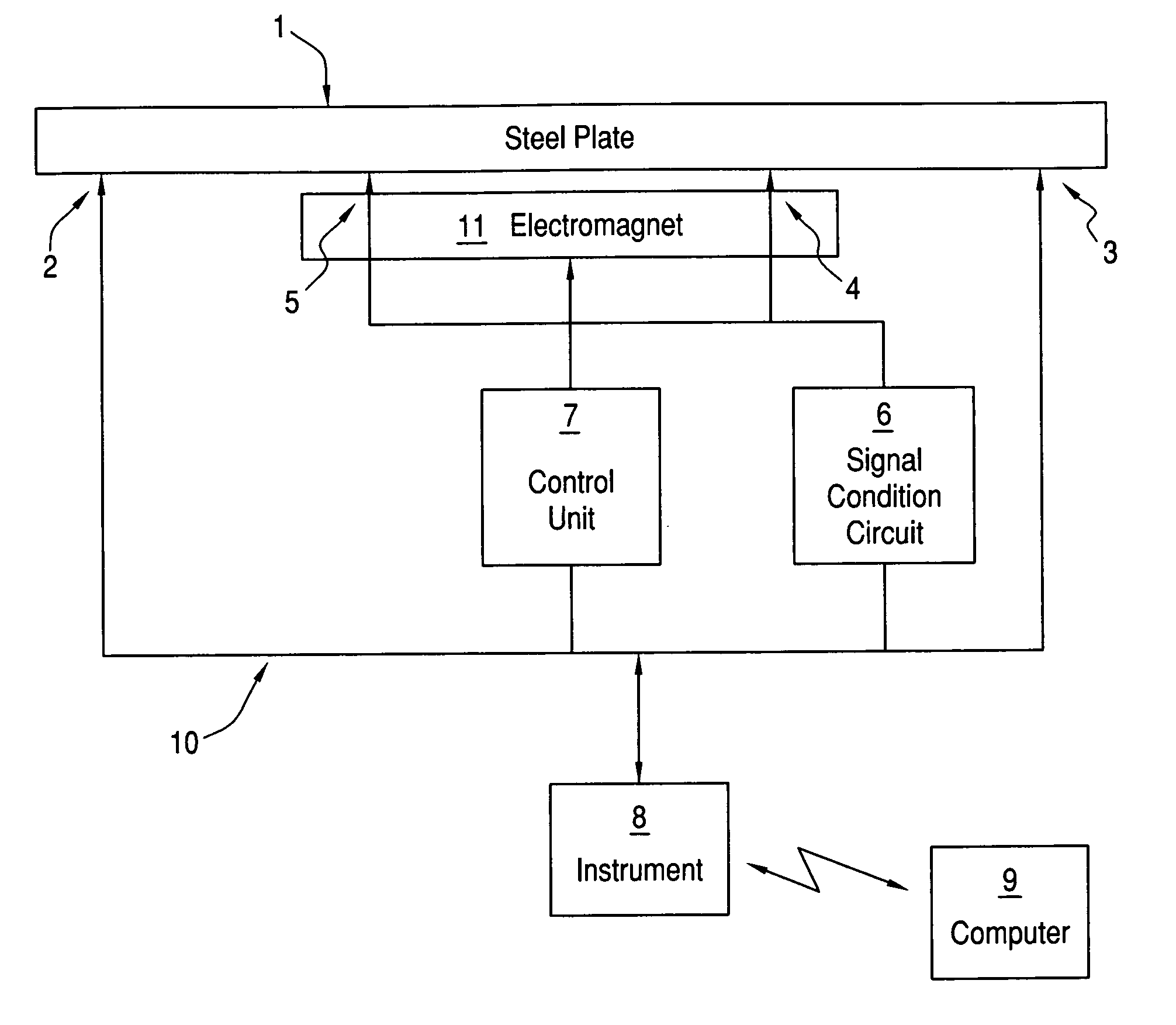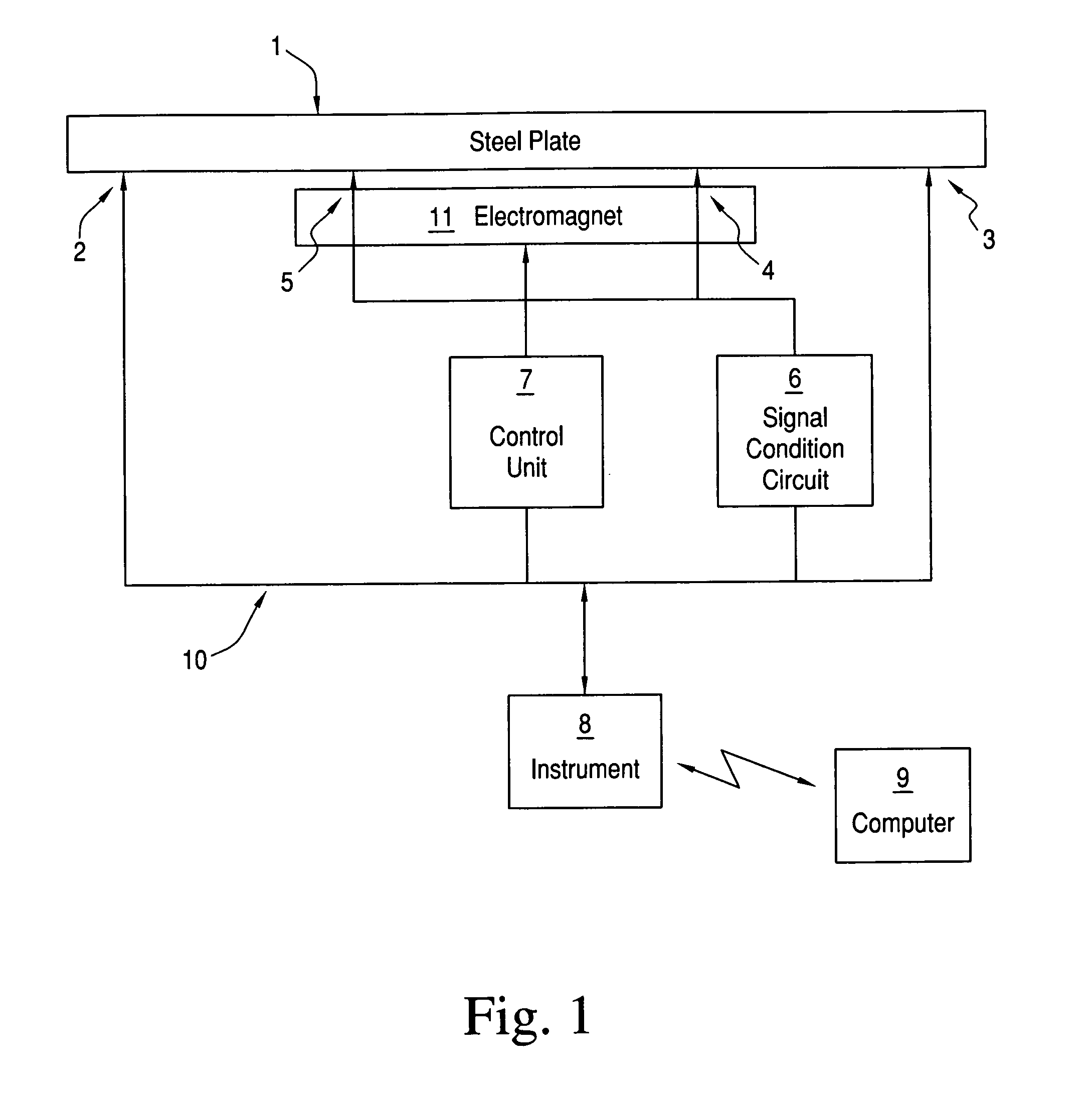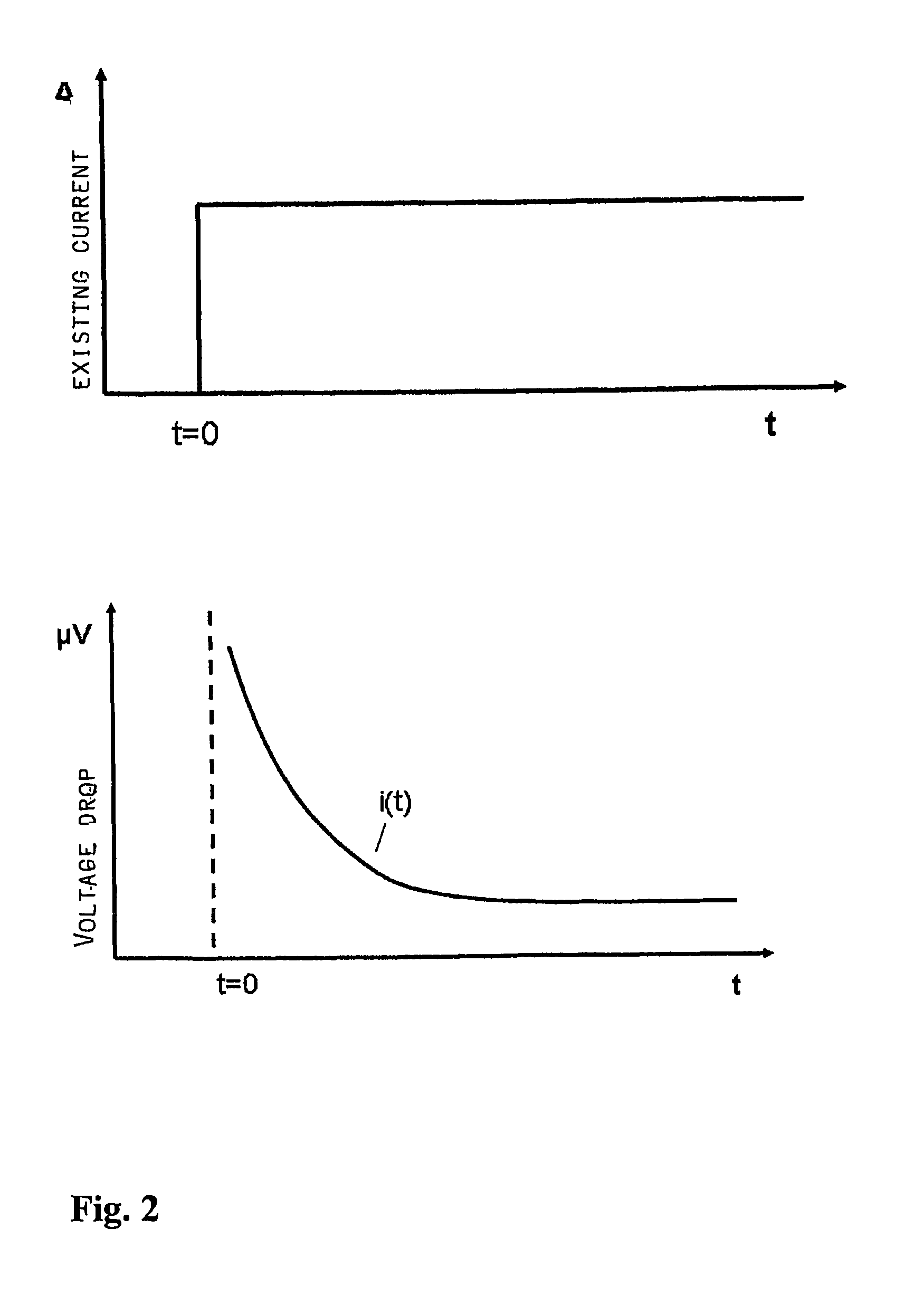Method and device for measuring the condition of steel structures
a technology for structural condition and measurement method, applied in the direction of liquid/fluent solid measurement, instrument, material electrochemical variable, etc., can solve the problems of mechanical stress that can arise unintentionally during construction, long transient time, and limited possibilities, so as to improve the detection sensitivity of micro cracks, improve the estimation of crack position, and improve the effect of sensitivity and accuracy
- Summary
- Abstract
- Description
- Claims
- Application Information
AI Technical Summary
Benefits of technology
Problems solved by technology
Method used
Image
Examples
Embodiment Construction
To the steel plate 1 in FIG. 1 current pulses (excitation current) is applied by means of the source of current in an instrument 8 through contact points 2,3. When required the source of current in 8 alternatively can be used for demagnetization. Such alternatives can be selected by a menu system in the instrument. By means of this source of current there is applied an alternating current with a amplitude diminishing to zero when used for demagnetization. The potential drop a(t) which is measured between measurement points 4,5 is fed to a signal condition circuit 6 that amplifies and digitises voltages and data is intermediately stored for later transfer to instrument 8 for preliminary processing and for later transfer and further processing in a computer 9. The program in computer 9 has an algorithm for analysing the voltage drop response to calculate mechanical stress and / or fatigue and / or cracks and / or metal loss in the monitored material.
By means of an electromagnet 11 the steel...
PUM
| Property | Measurement | Unit |
|---|---|---|
| mechanical stress | aaaaa | aaaaa |
| electrical voltage | aaaaa | aaaaa |
| voltage drop | aaaaa | aaaaa |
Abstract
Description
Claims
Application Information
 Login to View More
Login to View More - R&D
- Intellectual Property
- Life Sciences
- Materials
- Tech Scout
- Unparalleled Data Quality
- Higher Quality Content
- 60% Fewer Hallucinations
Browse by: Latest US Patents, China's latest patents, Technical Efficacy Thesaurus, Application Domain, Technology Topic, Popular Technical Reports.
© 2025 PatSnap. All rights reserved.Legal|Privacy policy|Modern Slavery Act Transparency Statement|Sitemap|About US| Contact US: help@patsnap.com



